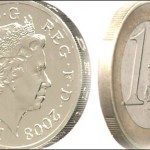Yesterday’s trade saw USD/CAD within the range of 1.3094-1.3405. The pair closed at 1.3119, plummeting 1.78% on a daily basis. It has been the 25th drop in the past 52 trading days and also the steepest one since March 3rd, when the pair lost 1.94%. The daily low has been the lowest level since November 4th, when a low of 1.3041 was registered. USD/CAD has increased losses to 3.66% of its value so far during the current month.
At 7:46 GMT today USD/CAD was losing 0.69% on the day to trade at 1.3028. The pair touched a daily low at 1.3024 at 7:45 GMT, overshooting the range support level (S3), and a daily high at 1.3133 during early Asian trade.
Canada’s dollar reached fresh 4.5-month highs against its US counterpart on Wednesday, as crude oil futures came in proximity to highs unseen in 3 months. March 16th marked the 33rd gain in oil prices out of the past 64 trading days. Oil futures for April delivery went up as high as $38.94 per barrel on March 16th, or the highest price level since March 11th, and closed at $38.84, climbing 5.23% on the day. As of 7:56 GMT today the commodity was gaining 1.29% on a daily basis to trade at $39.34 per barrel, after going up as high as $39.38 earlier. The latter has been the highest level since December 7th 2015, when a daily high of $40.15 per barrel was recorded.
Additional support to the loonie against the greenback came after the Federal Reserve Bank kept the target range for the federal funds rate on hold in line with market expectations. Fed policy makers noted US economic activity has been increasing moderately, but, however, they presented revised down GDP growth and inflation forecasts regarding 2016.
On Thursday USD/CAD trading may be influenced by the following macroeconomic reports as listed below.
Fundamentals
United States
Initial, Continuing Jobless Claims
The number of people in the United States, who filed for unemployment assistance for the first time during the business week ended on March 11th, probably rose to 268 000, according to market expectations, from 259 000 reported in the preceding week. The latter has been the lowest number of claims since the business week ended on October 16th 2015, when 259 000 claims were reported as well.
The 4-week moving average, an indicator lacking seasonal effects, was 267 500, marking a decrease by 2 500 compared to the preceding weeks revised down average.
The business week, which ended on March 4th has been the 52nd consecutive week, when jobless claims stood below the 300 000 threshold, which suggested a healthy labor market.
Initial jobless claims number is a short-term indicator, reflecting lay-offs in the country. In case the number of claims met expectations or increased further, this would have a moderate bearish effect on the US dollar.
The number of continuing jobless claims probably rose to the seasonally adjusted 2 228 000 during the business week ended on March 4th from 2 225 000 in the preceding week. The latter represented a decrease by 32 000 compared to the unrevised number of claims reported in the week ended on February 19th. This indicator reflects the actual number of people unemployed and currently receiving unemployment benefits, who filed for unemployment assistance at least two weeks ago.
The Department of Labor is to release the weekly report at 12:30 GMT.
Philadelphia Fed Manufacturing Survey
The Philadelphia Fed Manufacturing Index probably remained in negative territory for a fourth consecutive month in March, coming in at a reading of -1.7, according to the median forecast by experts. In February the gauge stood at -2.8. The index is based on a monthly business survey (the Business Outlook Survey), measuring manufacturing activity in the third district of the Federal Reserve, Philadelphia. Participants give their opinion about the direction of business changes in overall economy and different indicators of activity in their companies, such as employment, working hours, new and existing orders, deliveries, inventories, delivery time, price etc. The survey is conducted every month since May 1968. The results are presented as the difference between the percentages of positive and negative projections. A level above zero is indicative of improving conditions, while a level below zero is indicative of worsening conditions. In case the index improved more than projected, this would have a moderate bullish effect on the greenback. The Federal Reserve Bank of Philadelphia is expected to release the official results from the survey at 12:30 GMT.
Job Openings
The number of job openings in the United States probably slowed down to 5.566 million in January from a month ago, according to the median forecast by experts. In December 5.607 million job openings were reported, or the highest number since July 2015. This indicator refers to all job positions that are open, but not filled on the last business day of the month. Job openings are part of the Job Openings and Labor Turnover Survey (JOLTS), which gathers data from about 16 400 non-farm establishments including retailers and manufacturers, as well as federal, state, and local government entities in the 50 states and the District of Columbia. The survey assesses the unmet demand for labor in the labor market. A lower-than-projected level of job openings will usually have a limited bearish effect on the US dollar. The Bureau of Labor Statistics is to release the official report at 14:00 GMT.
Leading Economic Index by the Conference Board
The Conference Board Leading Economic Index for the United States probably rebounded in February, going up at a monthly rate of 0.2%, according to the median estimate by experts. In January the index went down by 0.2%, while extending the 0.2% drop in December.
It encompasses a variety of economic indicators, which signify possible changes in overall economic activity. The index is comprised by the following components: average weekly hours in manufacturing, average weekly initial claims for unemployment insurance, manufacturers’ new orders, consumer goods and materials, ISM Index of New Orders, manufacturers new orders, non-defense capital goods excluding aircraft orders, building permits, new private housing units, Stock prices, 500 common stocks, Leading Credit Index, interest rate spread, 10-year Treasury bonds less federal funds, average consumer expectations for business conditions. A better-than-expected performance of the index would have a moderate bullish effect on the US dollar. The Conference Board research group will release the official report at 14:00 GMT.
Daily and Weekly Pivot Levels
By employing the Camarilla calculation method, the daily pivot levels for USD/CAD are presented as follows:
R1 – 1.3148
R2 – 1.3176
R3 (range resistance) – 1.3205
R4 (range breakout) – 1.3290
S1 – 1.3090
S2 – 1.3062
S3 (range support) – 1.3033
S4 (range breakout) – 1.2948
By using the traditional method of calculation, the weekly pivot levels for USD/CAD are presented as follows:
Central Pivot Point – 1.3274
R1 – 1.3383
R2 – 1.3557
R3 – 1.3666
S1 – 1.3100
S2 – 1.2991
S3 – 1.2817





